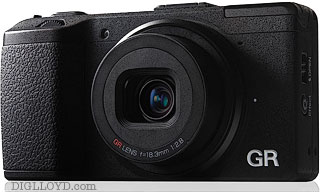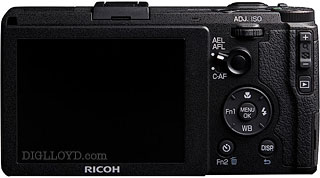Camera Usability and Image Quality: Bringing It All Together is Wonderful, but Still a Rarity (Ricoh GR)
My recent experience with the Ricoh GR and now extensively wide ranging experience with Sony NEX, Fujifilm X, Sigma DP Merrill and others has driven home several ideas:
- Image quality in APS-C cameras is now at an impressive level.
- Lens quality ranges from very good to superb in APS-C fixed-lens cameras.
- Fixed-lens APS-C cameras offer impressive imaging performance in a very compact lens form factor. Better to have one superb lens built-in and two camera bodies; I hope to see the Sigma DP Merrill initiative adopted by other brands and become a trend, e.g., additional Ricoh GR and Sony fixed-lens NEX focal choices.
- Ergonomics, usability, grip, controls are what distinguish the wheat from the chaff.
- Cameras with quirks that damage image quality have no place in my camera bag.
- Cameras that demand special software are inherently a handicap to productivity, and had better have uniquely excellent qualities to be considered viable.
- The “big guys” are hopelessly incompetent in meeting all of the above goals.
- Micro Fourth Thirds has few reasons to exist except perhaps for video use. APS-C cameras are plenty small (or too small in the wrong ways), and yet M4/3 cameras are not any smaller. The APS-C sensor is 63% larger and so M4/3 can never match APS-C quality. Custom sizes like the Sony RX100 are fine and dandy because they meet the above goals, but M4/3 in general is a turkey that can hop but not get off the ground. Olympus and Panasonic are riding a sinking ship unless they really innovate something compelling (hint: try fixed lens cameras that offer perfect image quality wide open).
Meeting all of the good points above and having none of the bad points, the camera of the year so far in my eyes is the Ricoh GR. I had the most enjoyable experience I’ve had with any compact camera—ever—while in the field recently. The results were uniformly dumbfoundingly excellent. And it shoots DNG, so no frustrating software hassles as with the Sigma DP Merrill line (still recommended, but raw conversion remains a hassle).
While the Ricoh GR has an unassuming appearance, never has a camera created such high quality images with so little hassle with such good usability and ergonomics and with features I can’t get anywhere else (built-in exposures up to 5 minutes like any other shutter speed, a feature idiotically absent from virtually all cameras).
Now if Ricoh offered an EVF for the GR, say the new Olympus VF-4 (superb), then I wouldn’t even bitch and moan that it isn’t built in. One has to accept a few faults after all.
David C writes:
You raved about the Ricoh GR, but what about the screwy lens artifacts: did that turn out to be just a defective lens?
DIGLLOYD: Fair question.
The issue did not arise for any of the ~1000 or so field images from which I selected as “normal” examples.; it requires an aggressive tonal manipulation to appear (a push). I like the Ricoh GR a lot, and would keep the "problem" one without hesitation (actively considering buying it, rare for me for such genre cameras).
I deem it unlikely that other brand cameras are free of this since they all employ similar lens construction and algorithms. Serendipity plays a role in finding such things. I did not go looking for it; I came across it while preparing an extreme case for dynamic range evaluation. No, I do not consider it a defective lens.
Furtherfmore, I have seen aspheric grinding marks even with Leica S lenses: one can always find such things if looking hard enough or if conditions converge just-so. I don’t know the full significance with the Ricoh GR, but given the ultra-high success rate in the field over 1000 frames or so, I see no evidence that I should care, and at about $800 I see it as a better camera than a Leica M240 with a 28/2.8 for most purposes, believe it or not (and I own the M240).

































